When you think of a strong brand community, you might picture Apple fanatics camping outside the store on the eve of a product launch or In-N-Out Burger’s cult following — and you’d be spot on.
A brand community is a group of customers who have an emotional connection to your brand and the values it represents. They don’t just buy your product or service. These community members read and share your content, connect with one another, and champion your brand to their friends, family, and co-workers.
As a business strategy, community-building can take many shapes. From community forums and lifestyle content to live events and loyalty programs, the 11 brand communities examples below will show you how to attract followers and unleash the power of “us” for your business.
1. Sephora
For a prime example of a flourishing community hub, look no further than Sephora’s Beauty Insider Community. Sephora unifies their base by tapping into the desire for unbiased, unsponsored beauty conversations. Their full-fledged online platform is free to join and boasts nearly 5 million members, providing a one-stop shop where users can share their holy grail products, show off hair and makeup looks, and trade tips in real time.
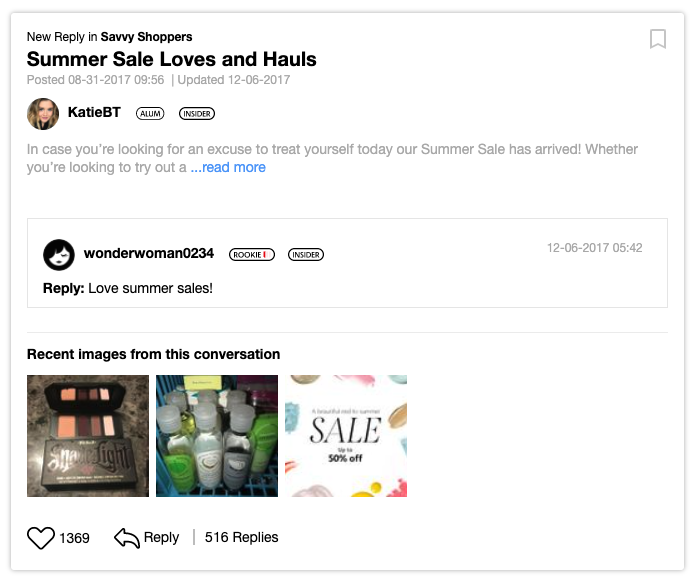
Community members can quickly find their niche and feel at home by joining Groups (formerly known as “Beauty Talk”) such as “Acne-Prone Skin” or “Fragrance Fans.” Most importantly, Sephora steps aside to let beauty fans lead the discussion and earn rewards points and free samples, while strategically reappearing with helpful content and product recommendations.
2. Ben & Jerry’s
A core tenet of brand community building is to give people and organizations something concrete and “real” to rally around. Few brands take this more seriously than Ben & Jerry’s. The popular ice cream manufacturer uses its platform to spread the word about social causes like racial justice, voting rights, and environmentalism, expanding their community reach far beyond ice cream lovers.
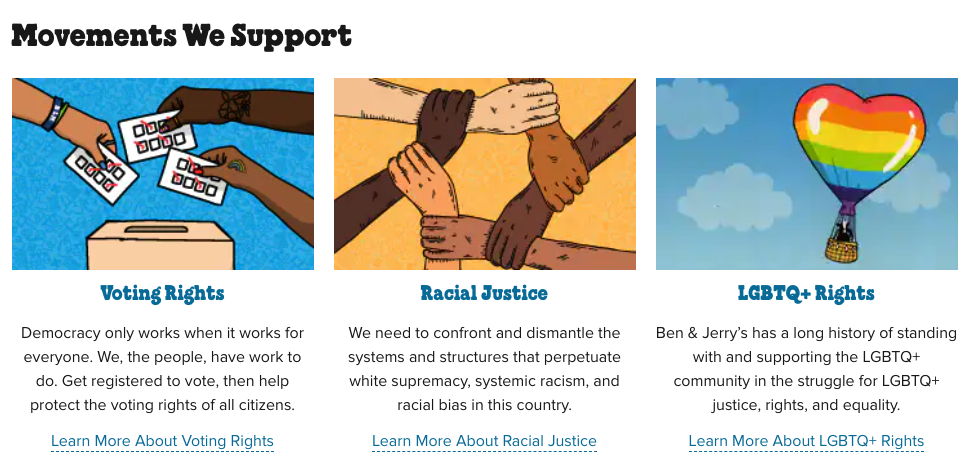
Their website prominently features easy-to-digest educational resources, campaign events, and volunteer signups. Although it can be controversial, taking a stance has yielded deep brand devotion for Ben & Jerry’s. Their social media posts on political topics frequently receive the highest levels of community engagement. These issues have also inspired flavors like Justice ReMix’d, which raises funds for nonprofits fighting racial inequality.
3. HubSpot
HubSpot, the marketing software company, offers another window into how to build thriving online brand communities. Through HubSpot Community, users are able to find answers, suggest new product ideas, share expertise, and get to know professionals in their line of work, across a variety of industries. For the brand, it’s a direct look into how marketers, sales teams, and developers interact with their product and solve challenges every day.
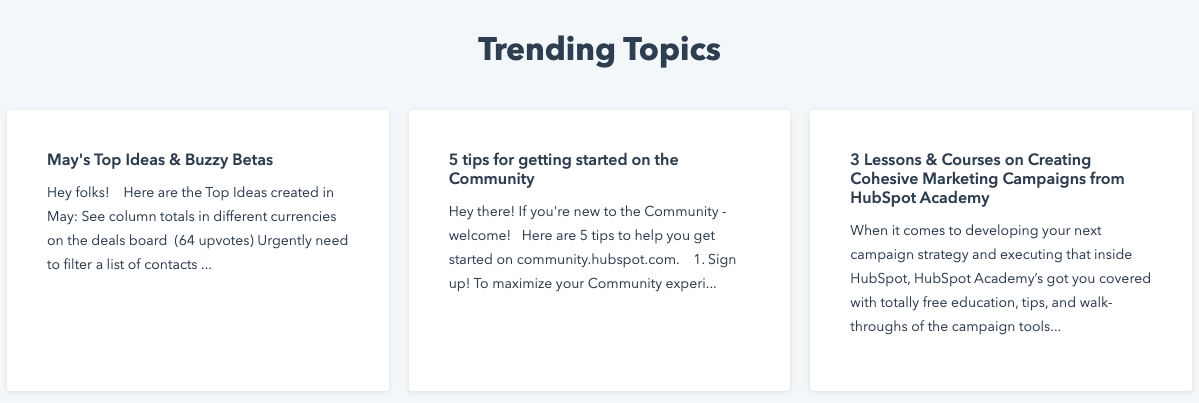
Two standout features include HubSpot User Groups (HUGs), where users can join groups like “Women in Tech” or “Custom Coders,” and the Ideas page, where users can watch their ideas go from submitted and reviewed to beta and completed. To humanize what could be a distant, disconnected experience, the brand also launched Humans of HubSpot, introducing community members and sparking fast connections.
4. The Sims 4 (EA)
The Sims is a life-simulator video game series that’s taken on a life of its own thanks to a fan base of creative, enthusiastic gamers. In-game, players can design their own Sim characters from scratch as well as homes, businesses, and cities. But Electronic Arts (EA) saw an opportunity to create even more value for their artistic community leading up to the newest Sims game.
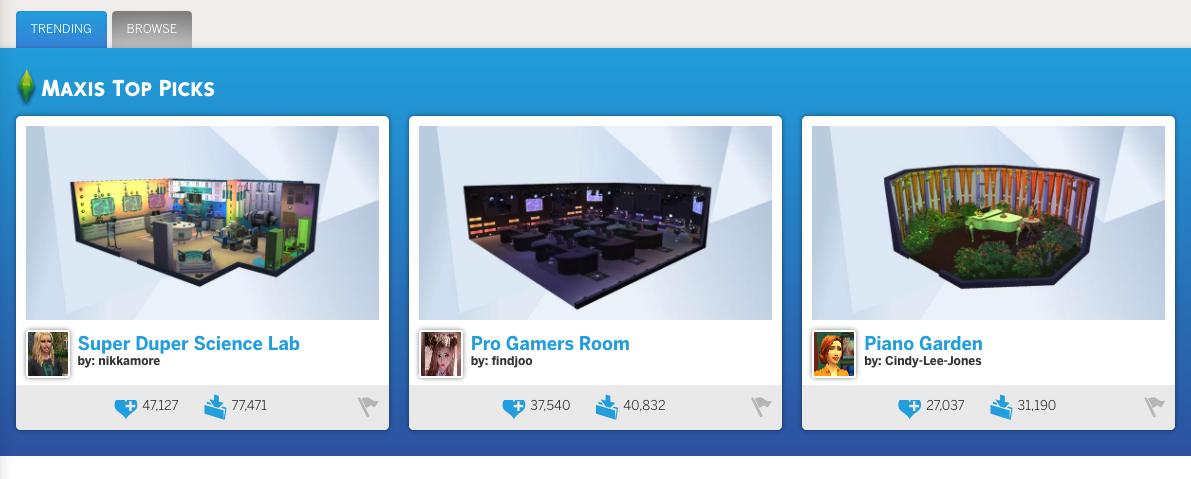
They launched The Sims 4 Gallery, where players can log in to like and comment on each other’s unique creations. Shareability is a prime feature — users can instantly download interesting builds and fan art packs. Trending designs regularly receive over 40,000 likes, and online forums are filled with chatter about new feature releases, game ideas, and more. For the right brand, it’s a simple lesson of “build it and they will come.”
5. LEGO
LEGO is all about giving their customers the power to shape their own worlds with colorful toy bricks. So, it makes complete sense that they’d open the floor to their enthusiastic builders and thinkers — ages 4 to 99 — to submit their favorite creations to LEGO Ideas.
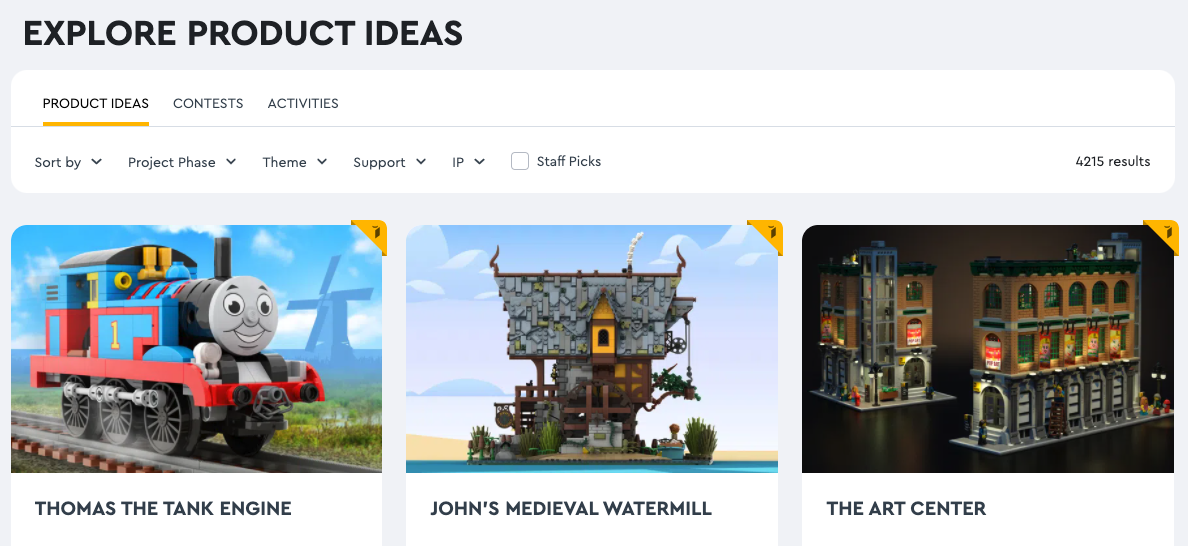
Offering a single, interactive space to share and appreciate ideas is a compelling way to engage customers. (My Starbucks Idea did it with some success until they reduced their lively community forum to a simple form in 2017). But what makes LEGO Ideas one of the best brand communities examples is that if a project receives 10,000 votes, LEGO Group will consider making it an official product. In 2021, a record-breaking 57 product ideas qualified for the review stage.
This incentive rewards customers for their contributions and makes them feel heard, while allowing LEGO to attune their product lineup to what their fans really want.
6. Method
Brand communities aren’t always uniform, and that’s a good thing. Method, the sustainable soap company, noticed an intersection between their laundry cleaning products and ASMR artists (or “ASMRtists”) producing quiet, relaxing videos of them doing laundry that were receiving hundreds of thousands of views.

Using Popular Pays, Method partnered with seven different ASMR influencers to get on the radar of this overlooked audience and create an authentic brand connection. The activation proved so successful that Method, Popular Pays, and ASMRtist ALBinWhisperland were nominated to host an SXSW panel titled “Oddly Satisfying: Niche Communities For Mass Reach.”
7. America’s Test Kitchen
If your brand wants to increase community engagement and boost customer loyalty, start with the initiatives that address your customers’ real-world challenges. For example, America’s Test Kitchen (ATK) launched Kitchen Classroom during the COVID-19 pandemic to help parents and kids stuck at home have fun and learn together.
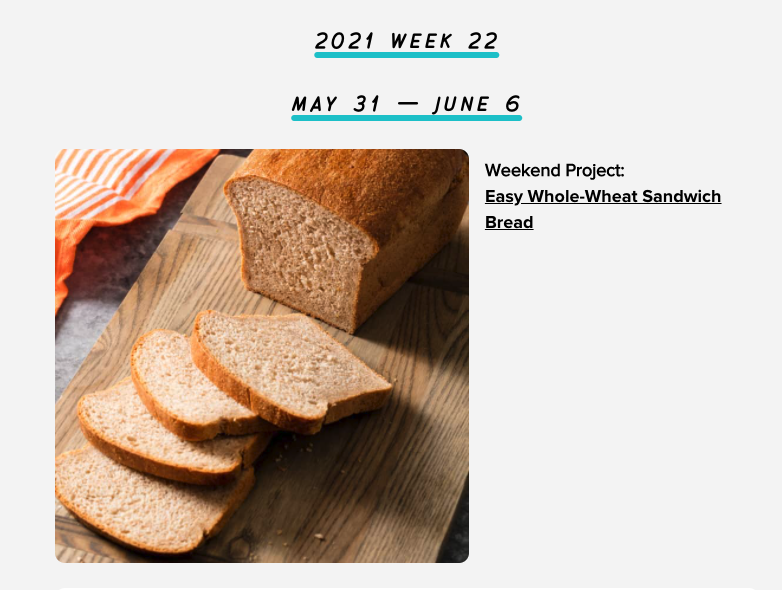
Each week, ATK shares a simple, kid-tested and kid-approved recipe, a hands-on experiment or fun activity, and a Learning Moment that gets kids thinking. They also provide a wealth of free content, from . Hundreds of families have used the #ATKkids hashtag on Instagram to celebrate their little chefs. It’s a great example of how you can build an online brand community while encouraging your members to continue connecting offline.
8. Depop
Ecommerce marketplace Depop is best described as part-eBay and part-Instagram, catering largely to millennial and Gen Z buyers and sellers. At heart, it’s a social hub that appeals to sustainable shoppers, trendsetters, and creative entrepreneurs. With this in mind, part of Depop’s brand community strategy is to simply shine the spotlight on its top contributors and rising stars. Depop Presents features a variety of artists on the platform and has racked up millions of views on YouTube alone.
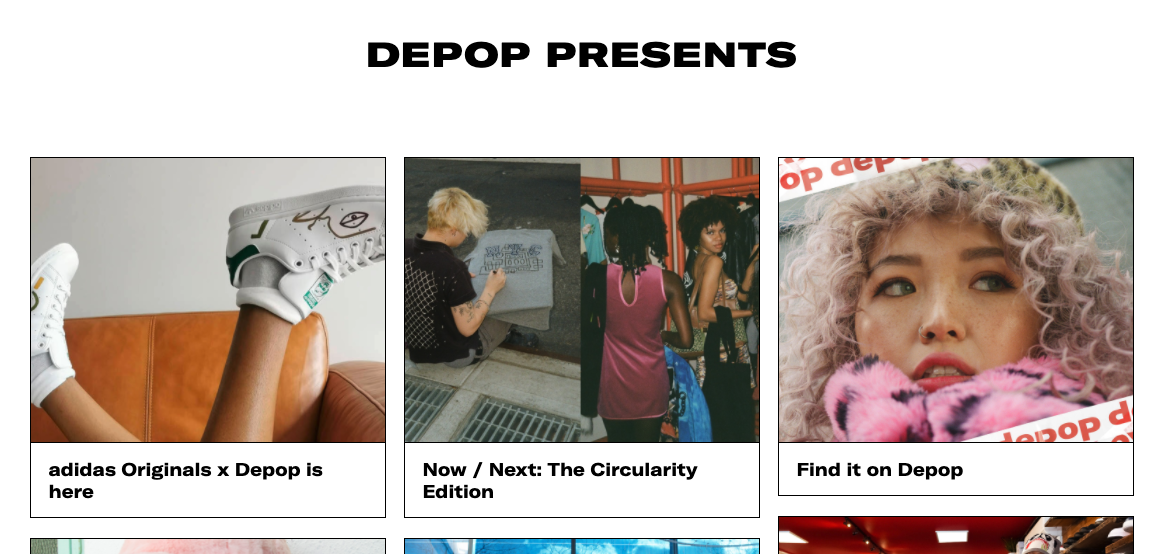
For Depop community members, fashion is truly personal expression. Lifestyle content that focuses on artists’ vision and community ties resonates deeply and creates a sense of belonging. The brand also partners with creators to host immersive pop-up shops, workshops, and events where the fashion obsessed and fashion newbies can exchange ideas and get inspired.
9. Harley-Davidson
More than 1 million motorcycle riders and enthusiasts make up Harley Owners Group (HOG), an official membership club that’s been around since 1983. Riding is its own reward for Harley-Davidson’s target audience, but HOG enhances their community experience by connecting riders with local bike chapters, rallies, and industry news. It.
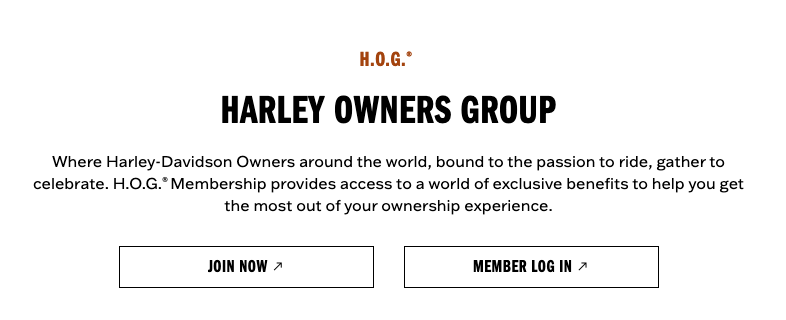
Harley’s gruff, casual brand voice makes community members feel like they’re part of the club right away, and they roll out the welcome wagon with perks like leather jacket patches, roadside assistance, points for miles driven, and more. HOG shows that you don’t need to reinvent the wheel to earn brand loyalty — the brand community builds off a long history of motorcycle group riding and biker clubs.
10. Stitch Fix
Stitch Fix is a personal styling service and one of the best examples of online brand communities. While some brands create community hubs on their websites or bring their followers together through marketing campaigns, Stitch Fix uses Pinterest to help their brand community bloom.

Their Pinterest board has over 1.2 million followers and nails brand-customer alignment. The ability for clients to pin looks and share them with their stylists make the client-stylist relationship seamless (pun-intended). Stitch Fix also publishes a wealth of guides and blog posts that help potential shoppers understand their style, find outfit ideas, and get looks they’ll love. Stitch Fix website visitors can even click on images in blogs to pin outfits for later.
11. Behance (Adobe)
Rounding out our list, Behance is an online platform where creatives can showcase their original works and discover new, inspiring content. Adobe takes Behance from digital portfolio website to booming brand community by injecting social media elements. This includes a “For You” feed, the ability to view and like projects and follow other users, and a Moodboards feature.
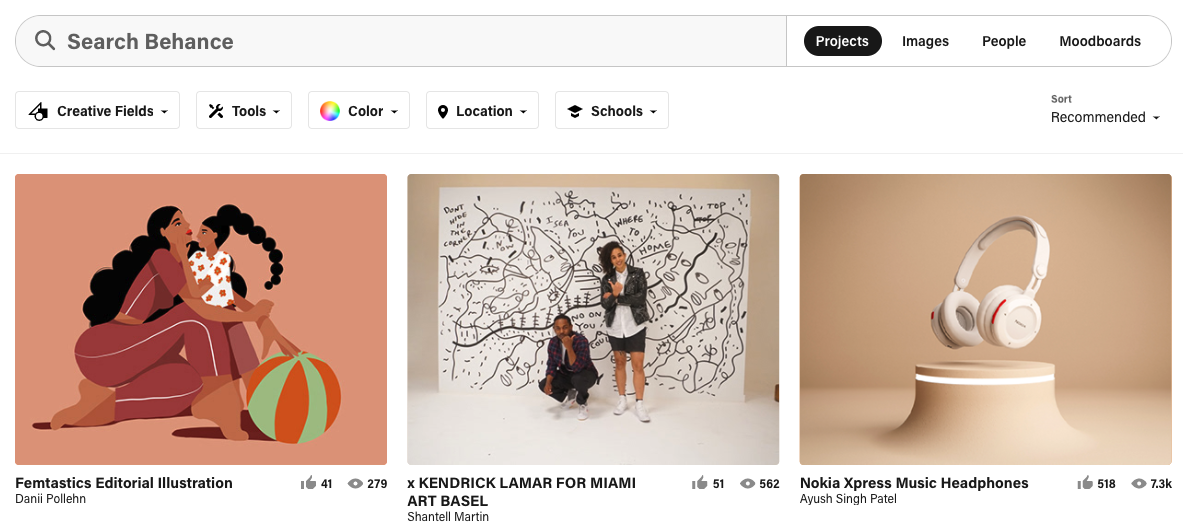
Adobe also delivers values and sparks collaboration with their Livestreams section. Leading artists and professionals share how-tos, tool tutorials, and inside looks at their field. At any time, users can jump in to ask questions and share their projects, creating a cascade of new content and conversation for the community hub.
Create your own thriving brand community
It’ll take time to land on the right community-building strategy. Some brands are ideal for user-generated content hubs or ask-and-answer forums. Other brands have to find more creative means of engaging with their market, like partnering with key influencers or sponsoring events that are already popular with their community.
As we’ve seen with these brand communities examples, experimentation and iteration isn’t failure. In fact, it’s vital to growing an engaged, active community while keeping it aligned with company goals. The exciting news is that once you take these initial steps, you’ll have a thriving community on your hands in no time.